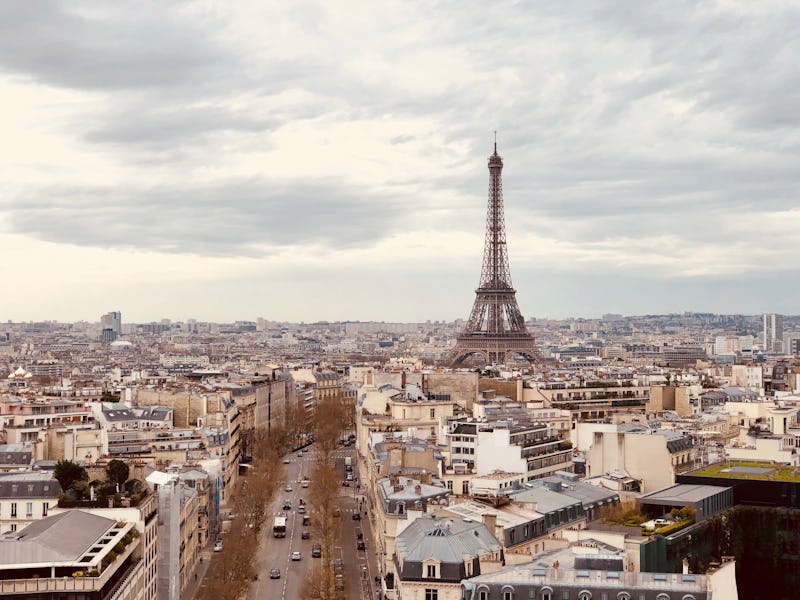There Shouldn't Be "Pissoirs" in Future Paris
Cultural attitudes may lead to "pissoirs" disappearing.

The figures are hard to pin down, but Paris, the city of lights, was once the city of pissoirs. The ancient street urinals also known as vespasiennes have largely been removed from the city, as better plumbing technology and shifting cultural attitudes about where it is proper to for men to urinate have made locations like 75 Boulevard Arago better known as “the last public urinal in Paris.”
The iconic pissoirs of Paris were eventually removed, and recently replaced recently with more eco-friendly urinoirs, which have been installed in the city.
The urinoirs have also come under fire from activists for a few good reasons. For one, cultural standards have shifted so that public urination in view of tourists — and generally everyone else who isn’t urinating in that moment — isn’t really deemed appropriate. Secondly, there’s something inherently sexist about them, as if men aren’t expected to “hold it” until they find a private toilet, but women are.
Activists are peeved about “pissoirs,” open-air urinals installed around Paris to deal with the city’s issue with “urine-soaked pavements,” The Guardian reports.
These open-air urinals were installed in heavily congested places around Paris “where there are many urine spills,” a statement from city officials explained on August 16. The devices are basically just a box where men can urinate, with a flower box on top, and contain straw to limit “unpleasant odors.”
The key word there is “men.” Feminist protesters have reportedly started to vandalize the new open-air urinals for being sexist, but officials aren’t sure exactly who is doing the damage.
These urinals are much more discreet.
Public urinals actually have a long history in Paris, according to CNN. In the late 1800s, for instance, they were installed for men as they went to and from work. Raymond Martin, managing director of the British Toilet Association, explained to CNN that when women began to enter the workforce in greater numbers, there was more of a need for toilets that involved enclosed cubicles and seats, toilet paper, hand basins, etc., like most public bathrooms people see today.
And urinal innovation is still, believe it or not, a topic of concern — like when a team of University of Oxford researchers determined that in order for future urinals not to splash back, they’ll have to be made of silicone.
But these recent, derided public open-air urinals seem to exclude women, and protestors are displeased. Notes left behind after two of these “pissoirs” were reportedly covered with stained sanitary towels and tampons and blocked up with concrete said Paris authorities are “encouraging men to unzip and relieve themselves without cover in open public spaces,” while, by comparison, public breastfeeding is still regarded negatively, The Guardian reports.
No specific group claimed responsibility for the damage and the notes. However, the feminist protest group Femen denied involvement with the actions.
Between both feminist groups and local residents being unhappy about these new urinals, there’s a chance these “uritrottoirs” may be removed. Gwendoline Coipeault, of French feminist group Femmes Solidaires, told Reuters that the open-air urinals “have been installed on a sexist proposition: men cannot control themselves (from the bladder point of view) and so all of society has to adapt. The public space must be transformed to cause them minimum discomfort.” She added, “It’s absurd, no one needs to urinate in the street.”
The Eiffel Tower in Paris at sunset.
And Paola Pellizzari, the owner of a Venetian art store, told Reuters, “There’s no need to put something so immodest and ugly in such an historic spot,” speaking of one of the red “urinoirs” which was placed on the Ile Saint-Louis, near Notre Dame cathedral and the Seine. Pellizzari said she’s worried that such a urinal “incites exhibitionism”.
This is an obvious turnaround for a city that apparently had these urinals back in the 1800s. But cultural attitudes regarding equality and appropriate public behavior are bound to shift over the years, as seems to be the case with these “pissoirs.”
Martin told CNN, “The trouble today is the inequality for women” inherent in these urinals. He noted that in the United Kingdom, different proposals for female urinals instead have been rejected because they could “expose” women in public. Similar urinals were not provided as part of this new initiative in Paris, hence the outrage over sexism.
The “pissoirs” may have been around in some form for many years, but this latest example is pissing people off enough that it remains to be seen whether cultural attitudes will lead to them disappearing for good.